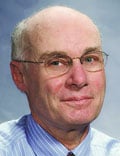One afternoon sometime in the late 1960s, I was sitting in the cardiology clinic of Boston Children’s Hospital waiting to see a late-arriving patient along with several of my medical school classmates and Dr Don Fyler, a cardiologist who would eventually inherit the cardiology department chair. To pass the time, Dr Fyler related a recent encounter with a patient’s mother. With tears of thanks in her eyes, the woman told him that the previous week was the first time she had ever bought her 6-year-old son new shoes because he had worn them out. Although he had continued to grow, his activity had been limited before the recent repair of his cardiac defect.

That five-decade-old scenario sprang into my mind as I read a paper published recently in JAMA Network Open. In a cross-sectional study of 207 participants, investigators found that “levels of cardiovascular fitness and physical activity were lower in children and adolescents with inherited cardiac disease than healthy controls.” Using a multivariable model, the authors found that “[o]verall, the clinical, functional, sociodemographic, and behavioral parameters” could explain 80% of the VO2 max.
So, although there certainly are structural limitations that may limit the congenital cardiac patient’s activity and fitness, there appear to be other possibly modifiable factors that should be considered. The authors cite previous studies demonstrating “associations between reduced cardiopulmonary fitness and poor psychosocial health, particularly among these youths with inherited cardiac diseases in which psychosocial well-being may already be compromised.”
The investigators also found that more than one third of the children with inherited cardiac disease had such poor cardiac fitness that they might be eligible for an exercise training program. Obviously, embarking on such a program might come with the risk for a life-threatening event for some individuals. With this possibility in mind, the authors suggest a multidisciplinary approach for children and adolescents with inherited cardiac disease involving cardiologists and exercise physiologists, as well as behavioral specialists and social workers.
As I reimagined that fifty-year-old scenario of the boy with new shoes, I realized I never knew the whole story. I can’t remember his cardiac defect. I had always assumed that his inactivity was entirely the result of low cardiac output or impaired oxygenation — and maybe it had been.
However, the results of this paper suggest that there may have been other factors. It may have been that his family had been discouraging physical activity because one of the child’s healthcare providers had told them that exercise might be dangerous. Or maybe, without being cautioned, the parents decided on their own that their child should avoid what they considered unsafe activities. Fifty years ago, pediatric cardiology was still in its infancy. It is very possible that physicians themselves had harbored concerns about the child being too active and communicated this to the parents.
The hesitancy of parents and providers to include physical activity in the management plan of acute and chronic pediatric illness is not unique to congenital cardiac disease. The same reluctance may occur in families who have a child with an orthopedic injury, a pulmonary problem such as asthma or cystic fibrosis, or an inflammatory joint disease — just to name a few.
In many cases, this blind spot results from both providers and caregivers focusing on what the child shouldn’t do instead of what the child can do. When parents ask what the child can do, they may be given vague guidelines instead of a menu of specific options. Unfortunately, this practice leaves it up to the discretion of the parents, some of whom may be anxious and create restrictions that prevent their child from engaging in safe and healthy activities. Other parents, who would be willing to encourage their child to be active, lack the creativity, personal experience with physical activity, or resources to develop a program on their own.
Several generations ago, surgeons were slow to realize that getting their postoperative patients up and moving dramatically improved their outcomes. More recently, concussion specialists who once restricted patients from returning to activities now realize that focusing on normalcy improves the speed of recovery.
Physical activity is one of the pillars of a healthy lifestyle. In addition to its positive effects on physiologic function are a raft of psychological and emotional benefits. There are very few situations in a which child is so ill that she or he won’t benefit from a creatively modified program of activity tailored to what the child can do rather than focused on what she or he can’t.
William G. Wilkoff, MD
https://www.medscape.com/viewarticle/focus-what-patient-can-do-2025a10008jj
No comments:
Post a Comment
Note: Only a member of this blog may post a comment.